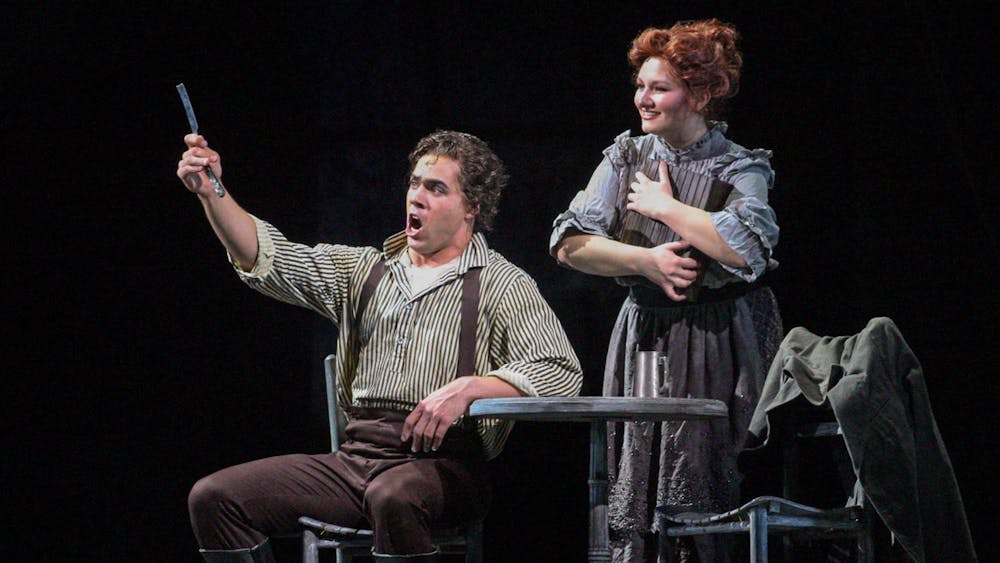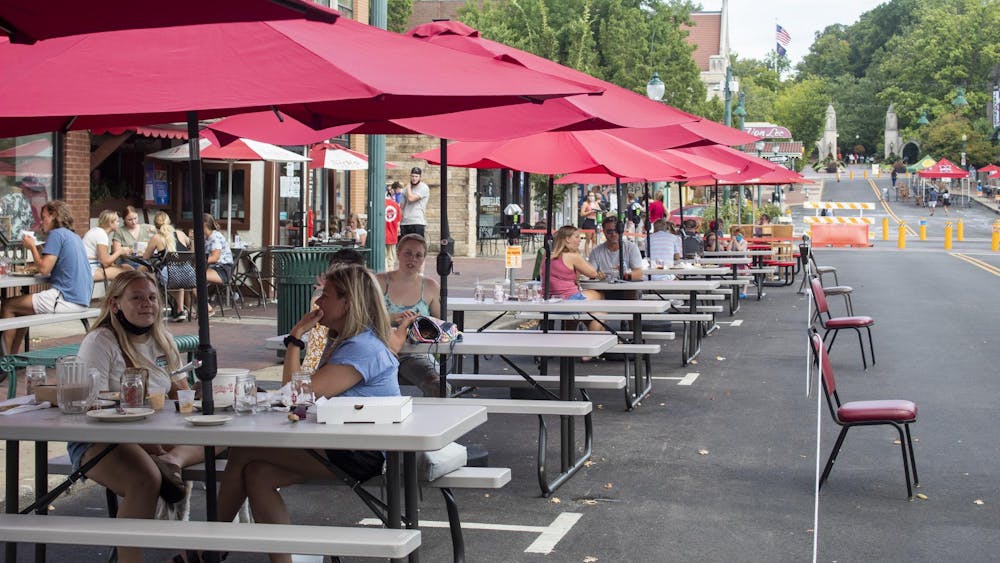The IU Art Museum opened the fall semester with a variety of installations and exhibits from throughout the aesthetic spectrum. From a look into the Chicago School to the “utopian factory,” each installation or exhibit touches on certain themes.
Two of the new print installations, on display since Aug. 25, relate to the Themester topic “@ Work: The Nature of Labor on a Changing Planet.” This theme will explore the shifts in the nature of work over the years, from the historical to the contemporary.
Judith A. Stubbs, curator of Asian art at IUAM, said one part of the installation, titled “East Asia @ Work,” is a selection of prints from a 1685 book called “Occupations of Japan” by Hishikawa Moronobu.
The illustrations were originally recorded on a set of three woodblock printed books from the Edo period, 1613 through 1868. Moronobu died in 1694.
The second is a mix of Chinese prints, some from the 1940s and others the 21st century, Stubbs said in an email.
“The Chinese Socialist Realist prints of the 1940s are unapologetic tools of communist propaganda,” Stubbs said. “Championed by Mao Zedong in a speech given in 1942 at the Yan’an Forum on Literature and Art, Mao Tse Tung saw art as a means to educate, glorify the masses and celebrate the worker.”
Stubbs said Zhao Yanli and Sun Jinyin, both contemporary artists, celebrate labor in a different context with their respective prints, reflecting characteristics of the older prints with some modernity thrown in.
“Zhao revisits the bold, bright colors of Chinese propaganda posters in her work, but by replacing guns or farm tools with pens and writing brushes, Zhao foregrounds the tools of propaganda,” Stubbs said. “Sun pays homage to the style of prints of the 19th century in his print highlighting the plight of the modern migrant worker in China.”
There is much to consider when putting together an installation such as this, Stubbs said.
She added the viewer’s perspective, as well as the background for the art, is important to note when trying to create a visually stimulating display.
“The objects need to be researched and labels written in such a way as to be interesting for the viewer,” Stubbs said. “One has to think about grouping objects, taking into account what other objects are nearby, the color of the walls and stands. You have to consider if you need mounts for the objects what size case or stand is needed.”
The amount of work that must be done requires multiple skill sets, Stubbs said, so teamwork and collaboration are crucial.
“An installation involves many people and departments in the museum from our installers, graphic designers, editor, registrar and education department, to name just a few,” Stubbs said.
Stubbs said some but not all of the prints on display in these installations have been displayed at the museum before, though not in the particular context of “work.”
The interest, Stubbs said, lies in the artist’s perspective and the visual appeal of the print itself.
“I think the prints are interesting on a visual level, but also the artists’ perspectives on a certain time and place adds another level of interest,” Stubbs said.
These particular installations will be viewable on the second floor of the museum until Dec. 20. The other recently unveiled collections include “The Utopian Factory: Precisionism and Modern Industry,” “Lewis Hine and Child Labor” and “The Chicago School: Pop’s Wild and Crazy Cousin.”





